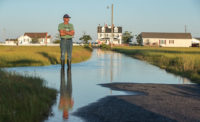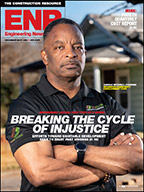At critical points, from 2004 to 2006, city officials pondered other options outlined by Carter & Burgess, including the least costly in the short run: hooking into the existing regional electrical grid.
Nutro, the pet-food supplier, proved to be an especially tough negotiator, complicating the plans for the powerplant.
Eventually, having chosen the islanded powerplant option, city officials decided to do the work in phases, with steps labeled as “A, B and C,” Lax explained to the jury. However, in March 2005, Victorville informed Carter & Burgess that it wanted an expanded powerplant, said Lax.
“And that affected the time and cost of Carter & Burgess’ services,” Lax told the jury.
In 2007, Pasadena, Calif.-based Jacobs Engineering announced its acquisition of Carter & Burgess, which was based in Fort Worth, Texas, and had 3,200 employees. At the time, Jacobs had 49,000 employees and about $8 billion in annual revenue.
The matter of names was a delicate one. Both sides agreed before the trial, when there were nastily contested preliminary motions regarding evidence and procedures, not to mention Jacobs Engineering during the trial. Although Jacobs Engineering was the guarantor of any possible judgment, Carter and Burgess would be the only defendant the jury would hear about.
The price of the acquisition was not disclosed, but, three years later, the image created in the jurors’ minds by Carter & Burgess’ size and deep experience became an integral part of the presentation by the city’s attorneys. The legal team consisted of Turner, Marion Hack and Victor Luke, all employed at Gibbs Giden Locher Turner Senet & Wittbrodt LLP.
They described a very different situation, arguing that Carter & Burgess was building the powerplant according to an inflated, improperly researched economic pro forma that was provided by Nutro. Instead, they said, Carter & Burgess should have come up with realistic load projections. (They also noted that Carter & Burgess staff went on an all-expense-paid examination trip to Nutro’s Nashville plant.)
Hack, in her opening statements, painted a picture of a formidable corporation, Carter & Burgess, dominating a town more accustomed to building Little League fields than cogeneration plants.
On the one hand, there was diminutive Victorville, with its 160,000 or so inhabitants and inexperienced city government. On the other hand, there was Carter & Burgess/Jacobs, a “corporation with thousands of employees” and a “nationally recognized design-engineering and consulting company,” Hack told the jurors.
Crucial Issue
A crucial underlying issue was Carter & Burgess/Jacobs’ dual role as Victorville’s adviser and designer. The engineering firm claimed it served only as an “independent contractor,” not the “agent” of the city, and would not have “authority” to bind the city to agreements, according to various court documents.
The agreement between the city and the firm in 2002 was originally worded so that Carter & Burgess was serving as the “city’s engineer.” But Carter & Burgess also executed separate contracts with the city to serve as the project’s design engineer.
City officials testified that Carter & Burgess’ project manager and key witness, E.B Jensen, once said, ”I will wear both hats,” referring to being both the city’s representative and design engineer for the project.
In most instances, designers are responsible for and get covered under their insurance policies only for negligence—that is, violating the traditional standard of care owed a client. That doesn't specifically include looking out for a client's economic best interest.
Based on the wordings of the agreement but mostly on the relationship between the city and the firm, Turner, Hack and Luke were able to convince the jury that Carter & Burgess/Jacobs bore a fiduciary responsibility to the city—meaning, the engineering firm was supposed to act and perform in the best interest of the city rather than treat the relationship as an arm's-distance business transaction. Going beyond standard responsibilities, a fiduciary responsibility is the highest standard of care an engineering firm can provide its client. It is similar to the standard a doctor or attorney is supposed to observe.
Other mistakes may have cut the firm’s credibility in the jurors' eyes.
In addition to the pro forma, the project fell behind schedule because of late plans, Victorville’s legal team claimed. According to the trial brief from Victorville, Jensen advised the city to write a letter to Jeff Duncan, vice president of Carter & Burgess, to demand more staff on the project. Jensen also said the reason for the late design drawings was that the firm had diverted personnel to work on a project for Oregon State.
Multiple mishaps during the trial also seemed to undermine Carter & Burgess' position.
About halfway through the trial, Jensen was called to testify by Lax and cross-examined by Victorville’s legal team. Jensen testified that key documents could only be found in the project’s Expedition file-sharing database but that these documents could no longer be recovered and were no where else.
Among the problems faced by Carter & Burgess, the project's Expedition database account was closed and a disk was damaged. How convincing Jensen was remains unclear.
Luke, Hack and Turner seized on this evidence and testimony to create the impression that Carter & Burgess was, at best, unreliable and, at worst, deliberately destroying or mislaying trial evidence.





Post a comment to this article
Report Abusive Comment